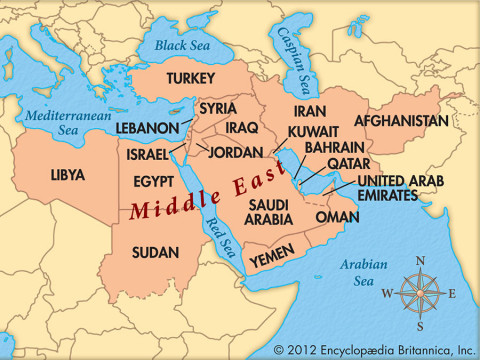Why is the Middle East called the Middle East?
A question commonly raised during Middle East cross-cultural training is why the region is named this way.
Well, here's a really quick explanation.
Geographically, there’s very little ‘east’ in the Middle East.
The region known as 'the Middle East' actually encompasses some of the most northern parts of Africa and South-West Asia.
So, the question needs to be asked, "what exactly is the region to the east of? and what is it in the middle of?"
To explain, we need to look to the British Empire.
DON'T MISS THE FREE VIDEO ON MIDDLE EAST CULTURE AT THE END!
The British Point of View
The term ‘Middle East’ is actually a political construct, which was coined in the 1850s by staff in the British India Office.
During this period, the 'Orient' (a term used to describe the East) was split into three distinct areas:
- the Near East
- the Middle East and
- the Far East.
The Near East included the Ottoman Empire (much of today's Turkey) and the Balkans.
The Far East included Asian countries along the Pacific Ocean.
British colonisation of India made this region of critical importance to the British during this time.
The Middle East, therefore, came to mean the lands in between these areas – essentially areas to the East of the Near East and to the West of the Far East.
The British have had a large hand in shaping this region before, during and after World War I.
Photo shows Sir Frederick Stanley Maude leading British troops (the Indian Army) into Baghdad (1917)
Why was the Middle East Important to the British?
The Middle Eastern region was particularly important to the British during this period in history as it served as a buffer region in the defence of British interests in India.
The terms made sense when they were first coined, and they helped to designate locations from a Eurocentric perspective.
The term 'Middle East' then evolved to become common verbal currency in 1902 when Alfred Thayer Mahan, a USA naval officer and historian, used the term in an article to describe the land between Arabia and India.
After the collapse of the Ottoman Empire as a result of WWI and other geopolitical events, the term ‘Middle East’ became established, widely used by people both within and outside the region.
Many argue, however, that since the term is Eurocentric and only valid from a Western perspective, it should be replaced with a term that is more appropriate.
Jerwaharlal Nehru (the first Prime Minister in India), for example, argued that the term should be replaced with ‘West Asia’. His suggestion continues to receive a great deal of support and many academics.
"Middle East” is problematic because it is, undeniably, a Western term reflecting a Western perspective.
Learn More About the Middle East
If you're interested in Middle Eastern culture, you will find our Middle East eLearning Online Cultural Awareness Course a great resource.
It offers super insights into the different cultures within the Middle East, the people, societies, values and mindsets.
Here's the free sample of the course video.
Related Posts
By accepting you will be accessing a service provided by a third-party external to https://www.commisceo-global.com/

 +44 0330 027 0207 or +1 (818) 532-6908
+44 0330 027 0207 or +1 (818) 532-6908

